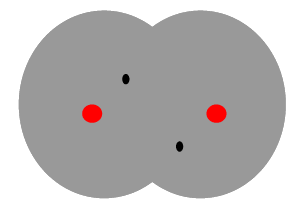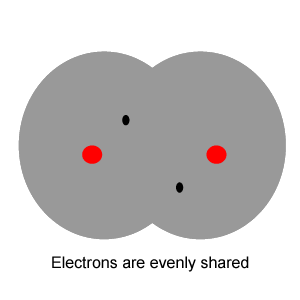
But sometimes the random nature of the electron's movement may cause an uneven distribution of electrons inside the molecule. This leads to the molecule becoming polar for an instant. Once again dispersion forces act between the molecules.

Since dispersion forces depend on random movement of electrons it makes sense to assume that the more electrons present in the molecule the greater the chance of the formation of instantaneous dipoles. The greater the frequency of instantaneous dipole formation the greater the strength of the dispersion forces.
Since melting temperature is
an indication of intermolecular bonding strength, place the following
molecules in order of increasing melting temperature. N2, Cl2,
F2, O2, I2 and H2
Solution
Why is CCl4 a liquid
at room temperature but I2 is a solid?
Solution
Click
to hide solution
Since all the molecules rely on dispersion forces only for intermolecular
bonding the size of the molecule is important. The geater the molecule
the greater the force of attraction and therefore the higher the melting
temperature.
H2> N2> O2> F2 > Cl2> I2
I2 is a bigger molecule than CCl4 . I2 has 104 electrons but CCl4 has 74 electrons.